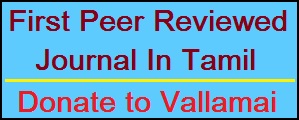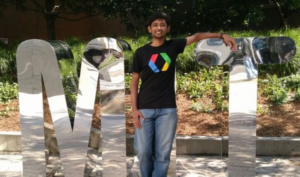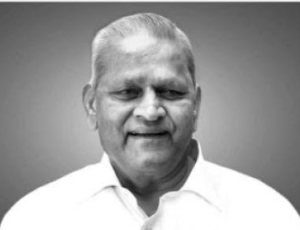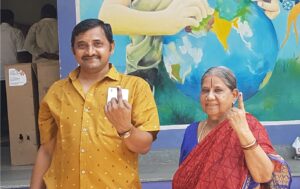Lecture at RMRL: Spatial and Temporal Dimensions of Caṅkam Tamil Literature
Prof. M. Anandakrishnan Endowment Lecture Series
Roja Muthiah Research Library
invites you for a
lecture on
Spatial and Temporal Dimensions of Caṅkam Tamil Literature
by
R. Balakrishnan
Honorary Consultant, Indus Research Centre, Roja Muthiah Research Library
Date: 12th July 2013
Time: 5.00 – 7.00 p.m.
Venue:
Roja Muthiah Research Library
3rd Cross Road, Central Polytechnic Campus
Taramani, Chennai 600 113
Telephone: 2254 2551 / 2254 2552
Tea will be served at 4.30 p.m.
——————————————————-
Summary of the talk
Caṅkam literature represents the ancient extant Dravidian corpus. It is evident that the classical Caṅkam texts could not have been an ‘overnight enterprise’ but indeed was an end product of centuries of oral traditions and literary conventions. Although Vēṅkaṭa Hills are designated as the formal northern boundaries of political and linguistic landscape of the Tamils of the Caṅkam Age, the fact remains that the Caṅkam texts deal intimately with the geographies much beyond that boundary line. There are events alluded to in the Caṅkam corpus that belong to a period much anterior. Besides, landscapes associated with some of those allusions clearly point to the extended geographical jurisdiction of the Caṅkam texts towards the north and the west.Consequently, the spatial and temporal dimensions of the Caṅkam texts emerge larger and deeper.
The speaker presents his case studies on portrayal of Himalayas, Camel, Yak and Lion in Caṅkam texts to highlight that the Caṅkam corpus shows an audacious familiarity with some of the most exclusive and micro-realities of the western and the northern geographies, some not captured even in the northern literature, and argues that this “first hand” intimacy of Tamil poetry with the northern and the western geographies points to the prehistoric presence of Dravidians in those regions.
Measuring together the visible lack of intimate knowledge about the unique flora and fauna and landscapes of the ‘deep south’ in the earliest northern texts and the apparent familiarity seen in Caṅkam texts with the northern heights and western fringes, the speaker states that Caṅkam texts, contrary to the existing impressions, truly represent a national character and hails the corpus as the first and foremost “grass-root literature” of India.
He further discusses the implications of his new findings on the “Dravidian Hypothesis” of the Indus Valley Civilization.
About the Speaker
R.Balakrishnan is a scholar in the field of Onomastics. Comparative Toponymy is his area of specialization. He believes that a scientific study of place names would provide reliable markers to reconstruct the trajectories of past migrations. In the year 2010 he announced the evidence of “Korkai, Vanji, Tondi Complex” in the north-western geographies and argued for a Dravidian role in the making of Indus Civilization and traced some tell-tale markers in the Old Tamil texts for the probable migrations from the Indus Region.His recent paper (December 2012) “The High-West: Low-East Dichotomy of Indus Cities: A Dravidian Paradigm” demonstrates that the key aspects of Indus town planning encode a concurring association with the topo-centric model for lexical encoding and naming of cardinal directions observed in the Dravidian languages.
Balakrishnan is a senior member of the Indian Administrative Service.
About Prof. M. Anandakrishnan
Prof. Anandakrishnan obtained Ph.D in Civil Engineering (1960) from the University of Minnesota, USA. He served as Professor of Civil Engineering at IIT, Kanpur between 1963 and 1974. He served the United Nations in the UN Centre for S&T for Development(1978-1989); as the Vice-Chancellor of Anna University (1990-96); and as Vice-Chairman of the Tamil Nadu State Council for Higher Education from 1996-2002. Currently he is the Chairman, Board of Governors, Indian Institute of Technology Kanpur and Rajasthan; President, Ranganathan Centre for Information Studies (RCIS), Chennai; President, Tamil Nadu Academy of Sciences, Chennai; Member, Board of Management, NUEPA, Delhi; Member, High Power Committee on Renovation and Rejuvenation of Higher Education in India and Chairman, Executive Council, Science City, Chennai. He was Chairman, MIDS between 2003 and 2008. He has served as Chairman or Member of several high level committees of MHRD, UGC, AICTE and NAAC. His honours and awards include Padma Shri from the President of India (2002); the Order of Scientific Merit from the President of Brazil (1996); Distinguished Leadership Award of the University of Minnesota (2003); Honorary Fellow of the Indian Society for Technical Education (2005); UGC National Swami Pranavananda Saraswati Award in Education (2006); Fellow of the Institution of Engineers, India and Fellow of the National Academy of Sciences, India.









